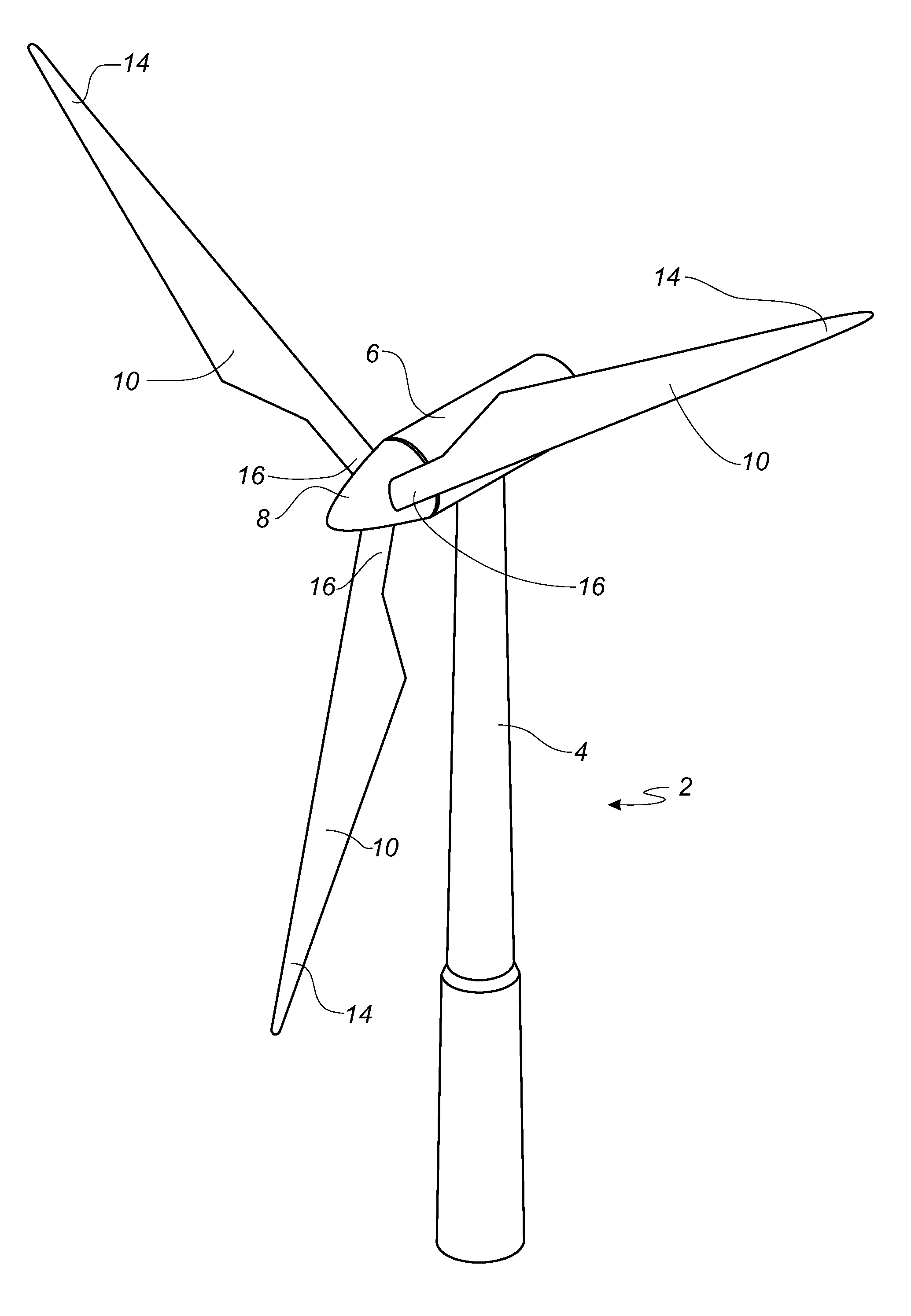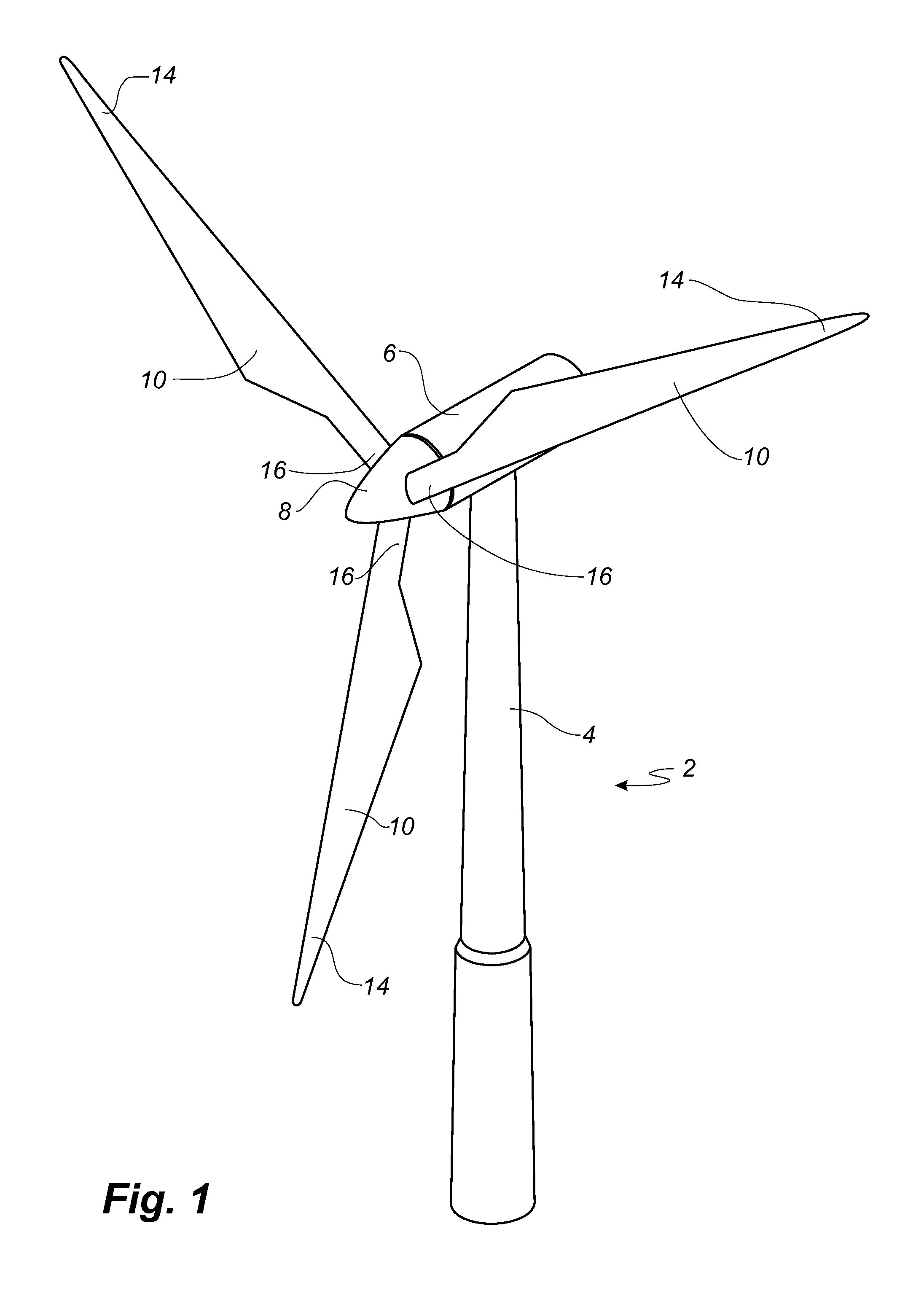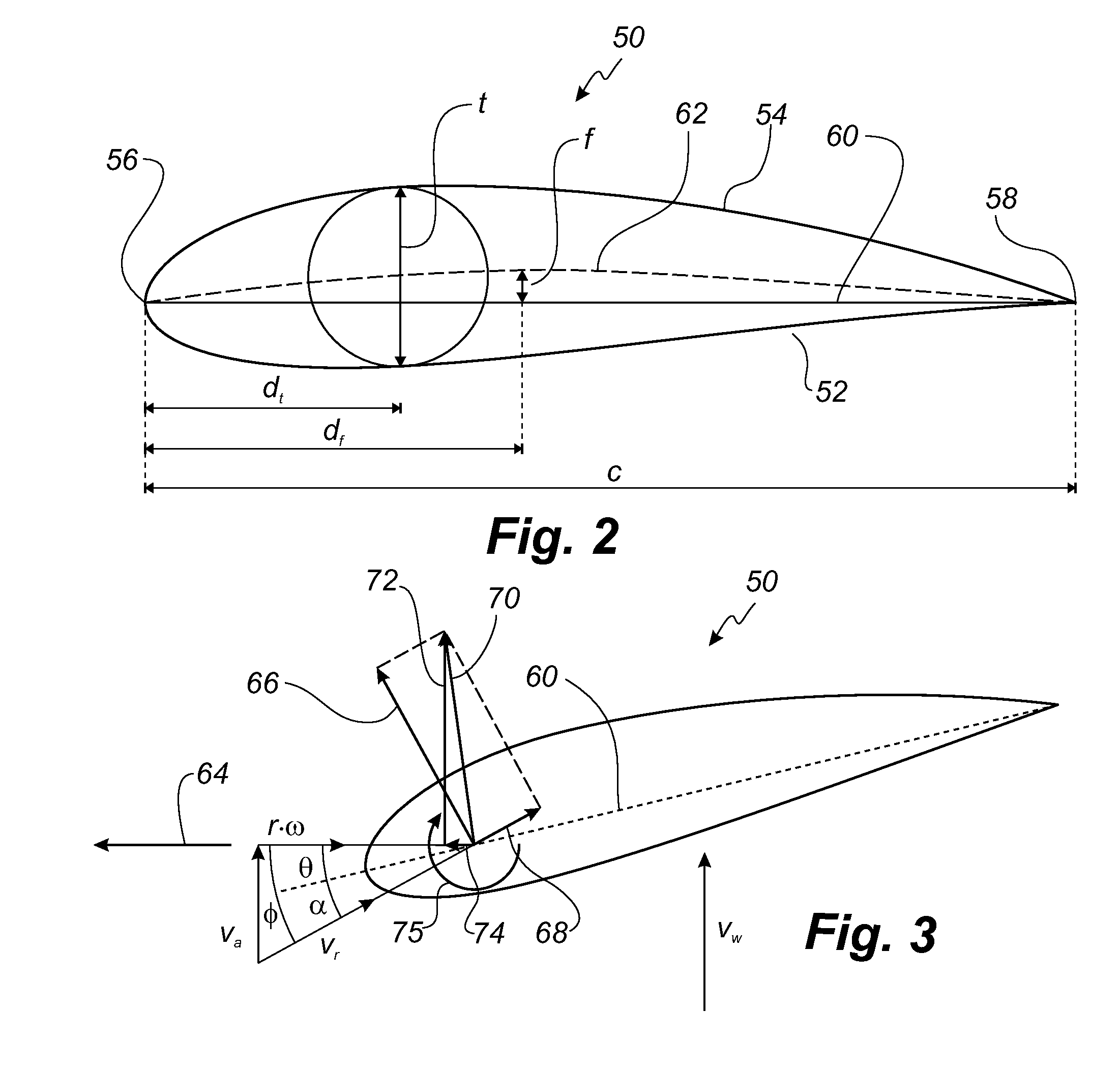Wind turbine blade provided with optical wind velocity measurement system
a wind turbine and optical wind technology, applied in the field of wind turbines, can solve the problems of increasing mechanical loads from strong winds and fluctuations, changing blade loads, and already too late to fully compensate for load changes, so as to achieve the effect of preparing to prob
- Summary
- Abstract
- Description
- Claims
- Application Information
AI Technical Summary
Benefits of technology
Problems solved by technology
Method used
Image
Examples
first embodiment
[0082]FIG. 4 shows a schematic view of a wind turbine blade 10 according to the invention. The wind turbine blade 10 has the shape of a conventional wind turbine blade and comprises a root region 30 closest to the hub, a profiled or an airfoil region 34 furthest away from the hub and a transition region 32 between the root region 30 and the airfoil region 34. The blade 10 comprises a leading edge 18 facing the direction of rotation of the blade 10 when the blade is mounted on the hub, and a trailing edge 20 facing the opposite direction of the leading edge 18.
[0083]The airfoil region 34 (also called the profiled region) has an ideal or almost ideal blade shape with respect to generating lift, whereas the root region 30 due to structural considerations has a substantially circular or elliptical cross-section, which for instance makes it easier and safer to mount the blade 10 to the hub. The diameter (or the chord) of the root region 30 is typically constant along the entire root area...
second embodiment
[0094]FIG. 6b shows a second embodiment illustrating a possible probing direction of the system. During rotation of the rotor a LDA system 480 located within a wind turbine blade of the rotor follows a motion along a concentric circle 425 having a radius from a central axis of the rotor 415. In this embodiment, the LDA system 480 emits a probing beam (or beams) in an inwards direction out of the cross-sectional plane of the local profile at the LDA system 480. The probing region is in this embodiment located at the same radial distance from the central axis 415 as the emission point. Thus, the system may more accurately probe the wind speeds of particles, which the local blade section in fact impacts.
third embodiment
[0095]FIG. 6c shows a third embodiment illustrating a possible probing direction of the system corresponding to the embodiment shown in FIG. 5c. During rotation of the rotor an LDA system 1080 located within a first wind turbine blade 1010 of the rotor follows a motion along a concentric circle 1025 having a radius from a central axis of the rotor 1015. In this embodiment, the LDA system 1080 emits a probing beam (or beams) in an inwards direction out of the cross-sectional plane of the local profile at the LDA system 1080. The probing beam(s) are emitted from a location in vicinity of the trailing edge of the first blade 1010 and the probing region is located in front of the leading edge of a second wind turbine blade 1010′. The probing region is in this embodiment located in the same radial distance from the central axis 1015 as the LDA system 1080. The probing direction may also be substantially tangentially to the concentric circle 1025.
PUM
 Login to View More
Login to View More Abstract
Description
Claims
Application Information
 Login to View More
Login to View More - R&D
- Intellectual Property
- Life Sciences
- Materials
- Tech Scout
- Unparalleled Data Quality
- Higher Quality Content
- 60% Fewer Hallucinations
Browse by: Latest US Patents, China's latest patents, Technical Efficacy Thesaurus, Application Domain, Technology Topic, Popular Technical Reports.
© 2025 PatSnap. All rights reserved.Legal|Privacy policy|Modern Slavery Act Transparency Statement|Sitemap|About US| Contact US: help@patsnap.com



